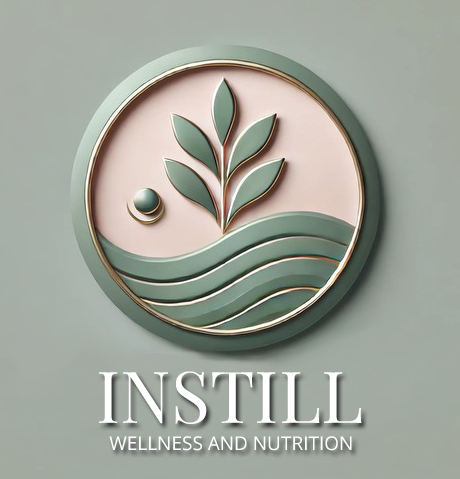Ever feel like you’ve done “all the right things”—antibiotics, supplements, clean eating, stress management—but your chronic symptoms just won’t budge? Whether it’s that UTI that keeps coming back, digestive drama that never seems to fully calm down, or unexplained fatigue you can’t shake, there may be a hidden reason your body is still struggling: bacterial biofilms.
These microscopic troublemakers don’t get talked about much in traditional medical offices, but in the functional health world, they’re a big deal—and possibly the missing piece in your healing puzzle.
Let me break it down in plain English.
What Are Biofilms—and Why Do They Matter?
Biofilms are like slimy little bunkers that bacteria and other microbes build to protect themselves. Once they’ve set up shop, these colonies are wrapped in a sticky matrix of sugars, proteins, and DNA—making them incredibly tough to eliminate. Think of it like a microscopic fortress in your body.
These structures allow bacteria to hide from your immune system and resist even powerful antibiotics. And they’re not rare—biofilms are involved in about 80% of chronic bacterial infections. They show up in places like your gut, sinuses, bladder, and even around dental work or implants.
This is why you might feel like you’re stuck in a cycle: the infection seems gone, you feel better for a while, and then boom—it’s back.
How Biofilms Sabotage Healing
The tricky thing is that conventional medicine typically treats the individual bug (like E. coli, Candida, or H. pylori), but not the biofilm it might be hiding in. So you can knock out some of the surface-level infection, but if the biofilm is still there, the microbes regroup—and the symptoms return.
You might be experiencing:
- Chronic sinus or bladder infections
- Digestive issues that come and go
- Constant low-grade inflammation
- Fatigue that doesn’t make sense
- Skin flares or acne that resists treatment
Sound familiar? Then it’s time to look deeper.
The Functional Approach: Break the Shield, Support the Body
Taking a Functional approach doesn’t just treat the infection—we go upstream to figure out why your body is vulnerable in the first place. When it comes to biofilms, the key is to weaken their defenses so your immune system and natural antimicrobials can actually do their job.
Here’s how we do that:
1. Targeted Nutrients + Herbs That Disrupt Biofilms
Some natural compounds can help loosen the sticky matrix. Curcumin (from turmeric) has been shown to break up biofilms and calm inflammation. Garlic, especially its active compound allicin, is another powerhouse that disrupts bacteria’s ability to form biofilms.
These are great additions to meals—but in stubborn cases, you’ll want to work with a practitioner to get therapeutic-strength supplements.
2. Enzymes That “Dissolve the Glue”
Proteolytic enzymes like serrapeptase and nattokinase have the ability to break down the protein matrix that holds biofilms together. This clears the way for your immune system or herbal antimicrobials to actually reach the pathogens. In practice, I often use these as part of a layered protocol.
3. Diet & Lifestyle Shifts That Starve the Invaders
Biofilm-forming bacteria love sugar and thrive in inflammatory environments. A diet low in processed carbs and high in colorful veggies, fiber, omega-3 fats, and clean protein helps make your internal environment less hospitable to these microbial communities.
Add in daily stress management (even 5 minutes of deep breathing helps), prioritize quality sleep, and consider targeted probiotics like Lactobacillus and Bifidobacterium to help restore gut balance.
The Bottom Line
If you’ve been chasing symptoms with no real answers, biofilms might be the reason you’re stuck. But the good news is that with the right strategy, you can begin to break them down and give your body the support it needs to finally heal.
This is exactly the kind of detective work I do with my clients—helping them uncover hidden root causes and create personalized protocols for real, lasting change.
If you’re ready to explore whether biofilms (or other root causes) could be behind your symptoms, let’s chat. You don’t have to keep guessing.
Want to go deeper? Let’s build a personalized plan that addresses gut health, hormones, and persistent inflammation from the inside out. You can reach me at april@instillnutrition.com.
References
- Ascenzioni, F., Cloeckaert, A., Di Domenico, E. G., Dunyach-Remy, C., & Guembe, M. (2021). Microbial Biofilms in Chronic and Recurrent Infections. Frontiers in Cellular and Infection Microbiology. Link
- American Society for Microbiology. (2023, March 6). The Role of Bacterial Biofilms in Antimicrobial Resistance. Link
- Kunnumakkara, A. B., et al. (2022). The Natural Product Curcumin as an Antibacterial Agent. Antibiotics, 11(3), 404. https://doi.org/10.3390/antibiotics11030404
- Lin, L., Wang, J., Yu, J., Li, Y., & Liu, G. (2013). Effects of Allicin on the Formation of Pseudomonas aeruginosa Biofilm. Polish Journal of Microbiology, 62(3), 243–251. PMID: 24459829
- Olson, M. E., Ceri, H., Morck, D. W., et al. (2015). An Essential Role for Coagulase in Staphylococcus aureus Biofilm Development. Journal of Infectious Diseases, 212(12), 1883–1893.
- Designs for Health. (2016). Biofilms and Resistance. Clinical and Scientific Insights (CASI). Link
- Hemarajata, P., & Versalovic, J. (2013). Effects of Probiotics on Gut Microbiota: Mechanisms of Intestinal Immunomodulation and Neuromodulation. Therapeutic Advances in Gastroenterology, 6(1), 39–51. https://doi.org/10.1177/1756283X12459294


